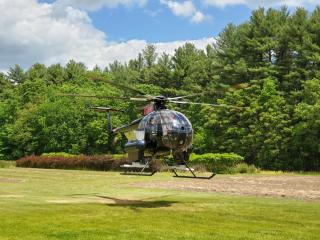2022 Enhanced Larval Control Program

May 26, 2022: Applications are complete
In 2019 we saw unprecedented levels of EEE in the MetroWest area. 12 CMMCP member communities were designated as “Critical” risk, and an additional 11 were designated as “High” risk for EEE. Several control measures were implemented by CMMCP, the Mass. Department of Public Health and the State Reclamation and Mosquito Control Board in 2019 for risk-reduction including larval control, public education, and both truck-mounted and aerial adulticiding.
In an effort to reduce risk in 2020, 2021 and 2022 from 2 species of mosquito that are implicated in the EEE transmission cycle in either birds or humans, CMMCP performed enhanced larval control operations in the communities designated as “Critical” and/or “High” risk in 2019[1].
In 2022 we will again perform enhanced larval control in communities designated as "Critical" risk in 2019. The mosquito species targeted in these applications is Coquillettidia perturbans. Larvae of these species have unique habits that make Bti less effective in their control. Cq. perturbans larvae have a unique biology; their larvae attach to the root systems of emergent vegetation such as cattails, breathing air through the root system of the plant. Since these larvae do not freely float looking for food like other mosquito species, the Bti bacteria are less available for consumption by the larvae. Most mosquito larvae rise to the surface of the water to breathe air, and descend to the bottom to filter-feed; Cq. perturbans larvae are stationary until they reach pupation and are ready to emerge.
The product to be employed for control of this species is a biological product called Natular® (the active ingredient is a bacterium called spinosad, Saccharopolyspora spinosa)[2]. A certified organic formulation will be used called Natular® G.
Rotary equipment (helicopter) will be used for these applications in areas greater than 5 acres, and follow up treatments by hand or backpack applications may be done in smaller habitats by CMMCP field staff.
Target dates for application will be the week of May 23-27 to coincide with weather and appropriate larval life stage. Pesticide labels and OMRI (organic) certifications are available from our office or on our website at https://www.cmmcp.org/pesticide-information/pages/spinosad-saccharopolyspora-spinosa.
OVERVIEW MAPS (.pdf):
- Cq. perturbans (~1,500 acres)
INDIVIDUAL TOWN MAPS (.pdf):
TOWN | 2019 RISK LEVEL | MAP (.pdf) |
| Cq. perturbans habitat acres |
Ashland | Critical |
| 158.1 | |
Grafton | Critical |
| 80 | |
Holliston | Critical |
| 207 | |
Hopedale | Critical |
| 31.9 | |
Hopkinton | Critical |
| 150.3 | |
Marlborough | Critical |
| 80.3 | |
Milford | Critical |
| 129.7 | |
Northborough | Critical |
| 250.8 | |
Northbridge | Critical |
| 39.2 | |
Shrewsbury | Critical |
| 58.4 | |
Southborough | Critical |
| 13.3 | |
Westborough | Critical |
| 301.1 | |
|
|
|
|
|
TOTALS |
|
|
| 1,500.08 acres |
[1] “Critical” – Ashland, Grafton, Holliston, Hopkinton, Hopedale, Marlborough, Milford, Northborough, Northbridge, Shrewsbury, Southborough, Sturbridge & Westborough.
[2] The National Pesticide Information Center, http://npic.orst.edu/ has information on Bti and spinosad

